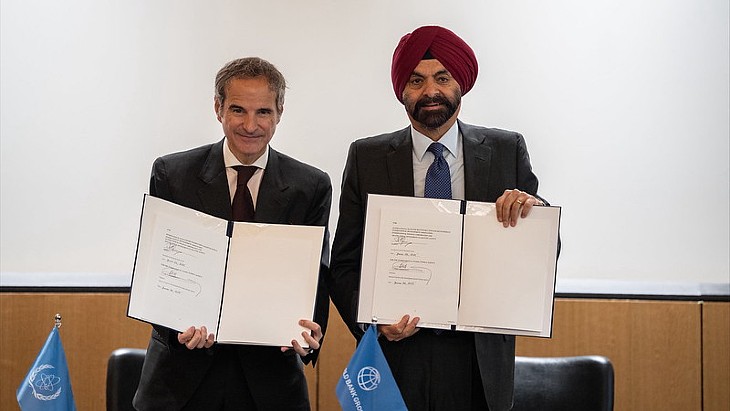Flamanville EPR hot tests to start next month
.jpg)
In a PWR, steam generators transfer reactor core heat from the primary coolant loop into a secondary loop where it can be used to generate electricity. The secondary loop is a closed system in which steam produced in the steam generator is conducted towards the turbine. Once condensed, the water is returned to the steam generator.
A quality deviation in the welding of the main secondary system of the Flamanville EPR in Normandy, northern France, was detected on 21 March last year during the initial comprehensive inspection, a regulatory requirement prior to the reactor starting up. This inspection includes an examination of the welds in the primary and secondary systems, and allows an initial reference state of the plant to be established before it begins operating. Further deviations in secondary system welds were subsequently detected.
Last July, EDF said a total of 33 welds had been found to have quality deficiencies and will be repaired. A further 20 welds will be redone, even though they do not have any defects, it added. At that time, EDF revised its start-up scheduled for the Flamanville EPR. Hot functional tests - which involve checking the equipment under similar temperature and pressure conditions to those under which it will operate - had been due to start that month, but would now begin before the end 2018, EDF said. The loading of fuel into the unit's core was rescheduled to late-2019 instead of late-2018. The company also raised the target construction costs for the plant from EUR10.5 billion (USD11.9 billion) to EUR10.9 billion (at the 2015 rate, excluding interim interest).
EDF said yesterday it "actively continues to implement the action plan on welds of the main secondary system announced on 25 July 2018". It added, "The 'hot tests' are now scheduled to commence during the second half of February."
The company noted, "The teams of EDF and of its industrial partners remain fully mobilised to complete the loading of nuclear fuel during the fourth quarter of 2019 under target construction costs for EDF at the commissioning date kept at EUR10.9 billion."
Last October, France's nuclear safety regulator, the Autorité de Sûreté Nucléaire (ASN), announced its conditional authorisation for EDF to commission and use the Flamanville 3 reactor pressure vessel. That authorisation was based on the regulator's October 2017 final opinion that the mechanical properties of the vessel head and bottom head of the Flamanville 3 EPR reactor pressure vessel are adequate and are therefore serviceable. This followed the discovery in 2015 by Areva NP of an anomaly in the composition of the steel in certain zones of the reactor pressure vessel's closure head and bottom head. The authorisation was only for the vessel and not the closure head, which ASN says must not be used beyond 2024.
Construction of the Flamanville EPR began in December 2007, with commercial operation originally expected in 2013.
In December, unit 1 of the Taishan plant in China's Guangdong province became the first EPR to enter commercial operation. Taishan 2 is scheduled to begin commercial operation this year. Olkiluoto 3 in Finland, the first-of-a-kind EPR, has completed hot functional tests and is preparing to load fuel. Two EPR units are also under construction at the Hinkley Point C project in Somerset, UK.
_92619.jpg)


_84504.jpg)





..._58412.jpg)

